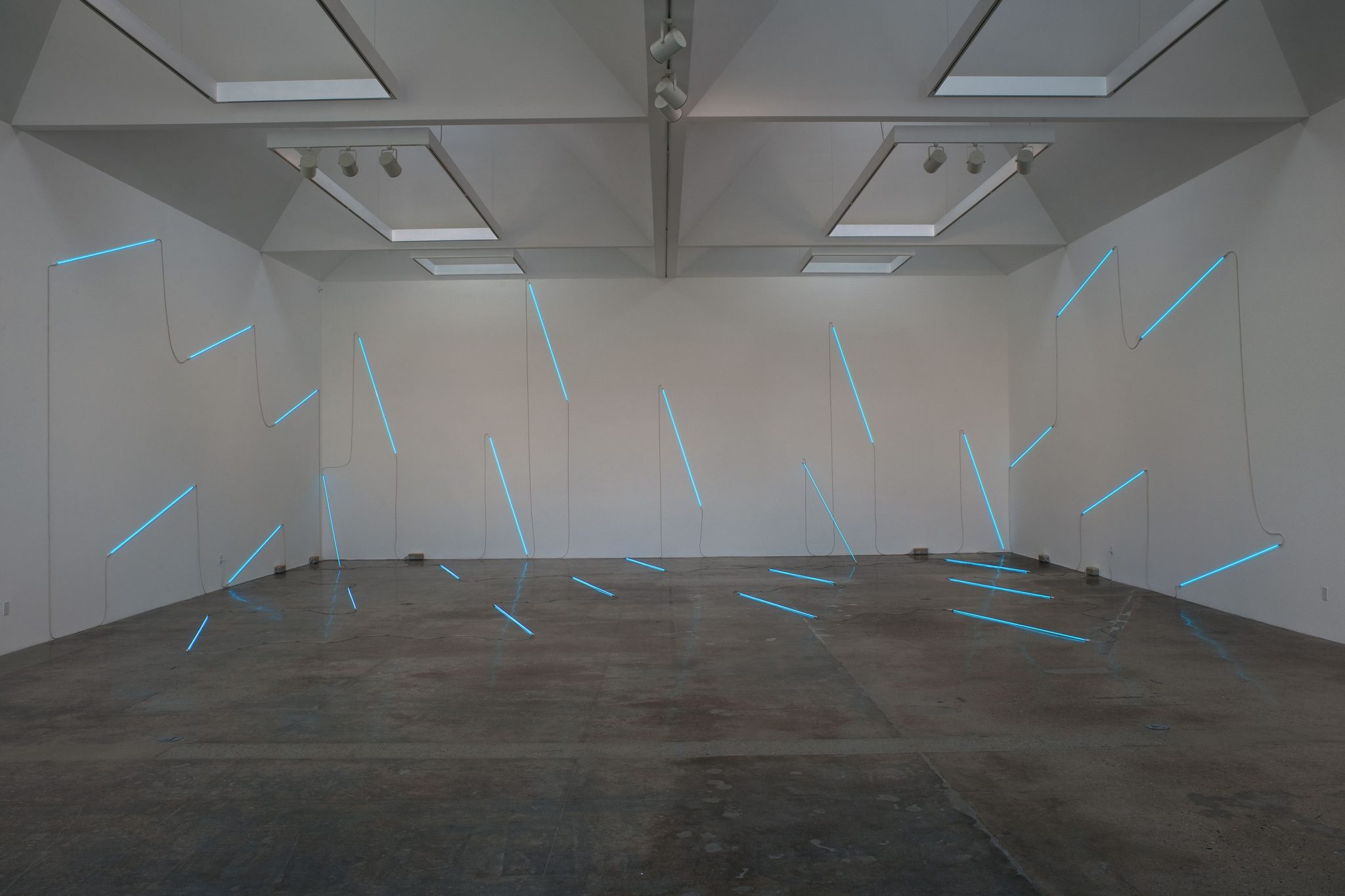The spectres of Frank Stella and Ellsworth Kelly still haunt contemporary painting, with their hard edges and pure colour beaming from remembered walls, but François Morellet’s straight lines and bright colours literally beam, here and elsewhere, with the tawdry, soft shimmer of neon. Even as cold LEDs take over the street lamps, and fluorescents evenly irradiate the Kafkaesque offices of the world, neon remains the most modern of lights. It’s a night light: the electric glow of traffic-choked boulevards and exhaust, of the shimmy and short skirt of the old Times Square prostitutes, of 24-hour diners and 3am discos. Maybe by ‘modern’ I mean more ‘moderne’, not contemporary exactly, but truly the last century’s industrial future, Disneyland’s Tomorrowland for decadent adults looking for cheap whisky and cheaper thrills, always an advertisement for some clubby desire just inside.
But even then, blue neon spears that rain from the walls and ceiling here attempt to refer only to themselves, a game long played by artists trying to free themselves from content: the faux-purity of modernist gesturing. But Kelly’s abstractions always cheerfully grinned like the logos of detergents from supermarket shelves, shapes and colours a 1950s housewife could love, and Morellet, as a cofounder of GRAV (Groupe de Recherche d’Art Visuel), evolved that minimal aesthetic into the hard cool hip of the 1960s, a time and aesthetic that still frequents American Apparel shop windows (not just a little French art smacks of such display).
The black taped-out grid on the gallery wall – Tamponade No. 2 (2013) – shows Richard Tuttle-ish affections for simple materials, but the grid is ever the grid, as Rosalind Krauss adroitly pointed out back in the day, and it dominates postwar art, the age of circuitboards and mall parking lots. As cities abandoned medieval ring roads for crisscrossing avenues, artists reflected it, from Mondrian’s boogie-woogie to Andre’s floor plates and LeWitt’s wall drawings. The trick is that even after 40 years, Morellet’s work still feels moderne, a chic present, an aesthetic hard to age. His is an art of codes and systems, geometries we can’t ever seem to evade.
Unlike Flavin or Turrell, whose penchant for light as medium is well known, with Morellet composition trumps atmosphere: the neons are like electric slashes of pure colour rather than open space soaked with a chromatic glow. Morellet’s neons rope down from the ceiling and stripe the gallery walls like piercing rain, but they also cross canvases. Though a couple of off-kilter pictures – Entre Deux Mers No. 2 (2013) – find their footing through the neatly painted acrylic horizon line they share (it parallels the ground while the paintings do not), the others are naked of wet paint and only have white neon tubes angled across the surface of their canvas, flowing into the air like paint could only ever dream of doing.
This article was first published in the December 2013 issue.
